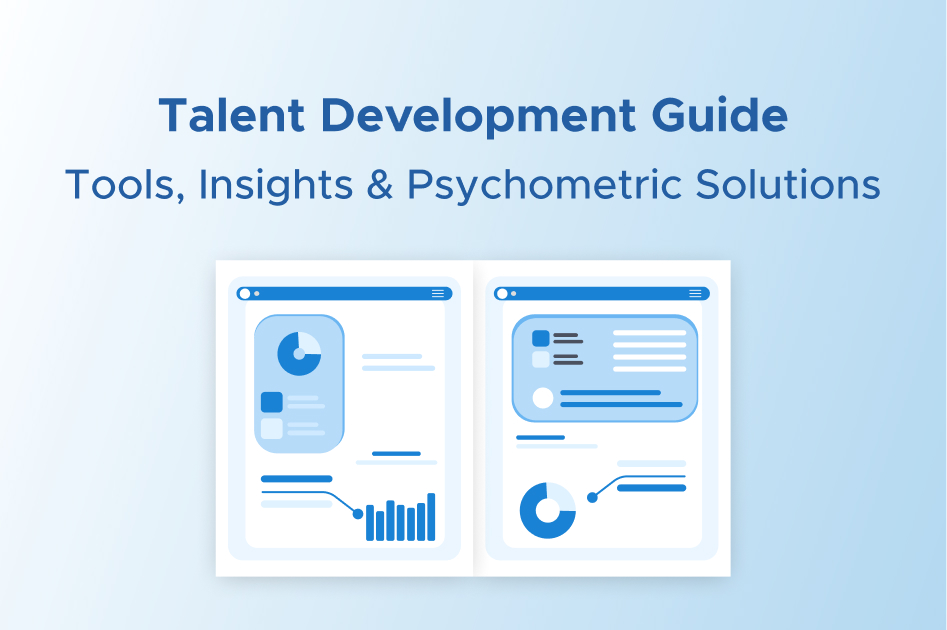A Better Approach to Succession Planning Using Assessment Data

Fewer than one in five family businesses in the Gulf region have a comprehensive succession planning plan in place. That means over 80% of these economic powerhouses are one retirement or unexpected event away from a potential leadership crisis.
We all know succession planning is a priority, but why is there such a gap between knowing we should do it and actually having a ready-to-activate plan?
Many organizations rely on intuition instead of data, which significantly increases the risk associated with succession planning.
But what if you could replace that uncertainty with evidence?
The solution lies in using talent assessment data for a strategic, evidence-based process.
In this article, you’ll see how this data-driven approach turns a competency-based assessment into the foundation for targeted talent development. By the end, you’ll be able to build a leadership pipeline that is both strong and defensible.
Why Getting Succession Right Matters in the GCC & MENA
Poor succession planning is a direct threat to your business. Let's look at the facts.
- Lack of formal plans: Only 18% of GCC family businesses have a comprehensive succession planning process. This means that the vast majority are operating on hope, rather than a strategy.
- The "tomorrow" problem: In Saudi Arabia, nearly 60% of businesses treat succession as a future issue. They push it to next year, and then the next. But leadership transitions rarely give you a convenient heads-up.
- The culture clash: A major barrier is intergenerational friction. Founders with traditional methods often hesitate to hand over the reins to younger leaders who support modern, data-driven approaches.
The costs are immediate and tangible. Projects stall. Morale drops. This chaos directly threatens stability. You also lose something priceless: institutional knowledge.
This is why strategic talent development is your safety net.
The Power of Data: Turning Guesses Into Evidence
So, how do we fix the guessing game in succession planning? We stop relying on opinions and start trusting evidence. We use data.
This is where talent assessment makes all the difference. It’s a systematic way to map the skills and potential already inside your company.
The traditional approach often relies on three shaky pillars:
- How long someone has been there (tenure)
- Who they know (relationships)
- A manager's gut feeling (subjective opinion)
This method has blind spots because you might overlook a brilliant, younger leader simply because they are new. It’s also how great talent slips away.
A data-driven approach, however, uses assessments to build a complete picture. It provides an objective, 360-degree view of an employee's true capabilities and their readiness for a more senior role.
The Practical Framework of Data-Driven Succession Planning
Phase 1: Identify With Insight
First, you need to know who your future leaders are. Not based on a hunch, but on hard evidence. This starts with a strong assessment. Specifically, a Competency-based assessment. You use tools like 360 feedback or structured interviews to measure everyone against the same clear standards.
Phase 2: Develop With Precision
Now, you know who your high-potentials are. But are they ready? Probably not yet. This is where talent development comes in handy.
For each future leader, you create a personalized Individual Development Plan (IDP). This is a custom-built blueprint for growth, directly fueled by assessment data.
The assessment shows you the exact gaps, while the IDP builds the bridge to cross them.
Here’s a real example. If your Competency-based assessment shows a manager is great at daily operations but weak in long-term strategy, their individual development plan becomes hyper-specific.
- A mentor from the strategy team.
- Leading a special project focused on market trends.
- A course on strategic thinking.
Every activity has a clear purpose. You’re not guessing what they need. You’re closing a specific, measured gap. This is how you build readiness, fast.
Phase 3: Review and Refine
Succession planning is not a "set it and forget it" task. Your business changes, and your people grow, so you must make this a living cycle.
Schedule regular reviews at least once a year. In these reviews, you do three things:
- Update the assessment data. Have people gained new skills?
- Check progress on every Individual Development Plan. What worked? What didn't?
- Ensure your leadership pipeline still matches your company's future goals.
Benefits Beyond the Succession Plan
A great succession planning strategy does more than just name a future CEO. It creates positive waves across your entire company.
First, you keep your best people. Top talent wants to grow. They want a clear path forward. When you invest in someone’s growth with a personalized Individual Development Plan, you show them they have a future with you.
Next, you build leaders for your future, not your past. Your future leadership is built on the exact competencies your future business strategy needs. Think about it. You are using a competency-based assessment to find and develop people based on the skills that will matter tomorrow.
Finally, you build a fair and transparent culture. Using objective assessment data promotes a true culture of meritocracy. It removes gut feelings and personal bias from the equation.
Building a Legacy of Leadership
Our region needs a new approach to leadership transition. The most successful companies will use data, not intuition, for their succession planning.
This is how you build a lasting legacy.
At Zenithr, we provide the tools for this change. Our competency-based assessment delivers the objective data you need for effective development. This data helps you create powerful individual development plans that drive real talent development.
Stop guessing about your future leaders. Start building them.
Frequently Asked Questions
What is data-driven succession planning?
It’s an evidence-based approach that uses competency and assessment data to identify and develop future leaders, reducing bias and improving accuracy.
Why is succession planning critical in GCC & MENA?
Family-owned and multi-generational businesses face unique leadership transitions. A formal plan ensures stability, fairness, and long-term success.
How can assessments improve leadership readiness?
Assessments highlight strengths, gaps, and growth areas for each potential leader, helping organizations create personalized development plans.
Does Zenithr offer tools for succession planning?
Yes. Zenithr provides assessment and development tools that help companies measure potential, build fair frameworks, and prepare future leaders effectively.
Subscribe to our newsletter
Related posts
Explore moreEmotional Intelligence Assessments for Recruitment

A Better Approach to Succession Planning Using Assessment Data

